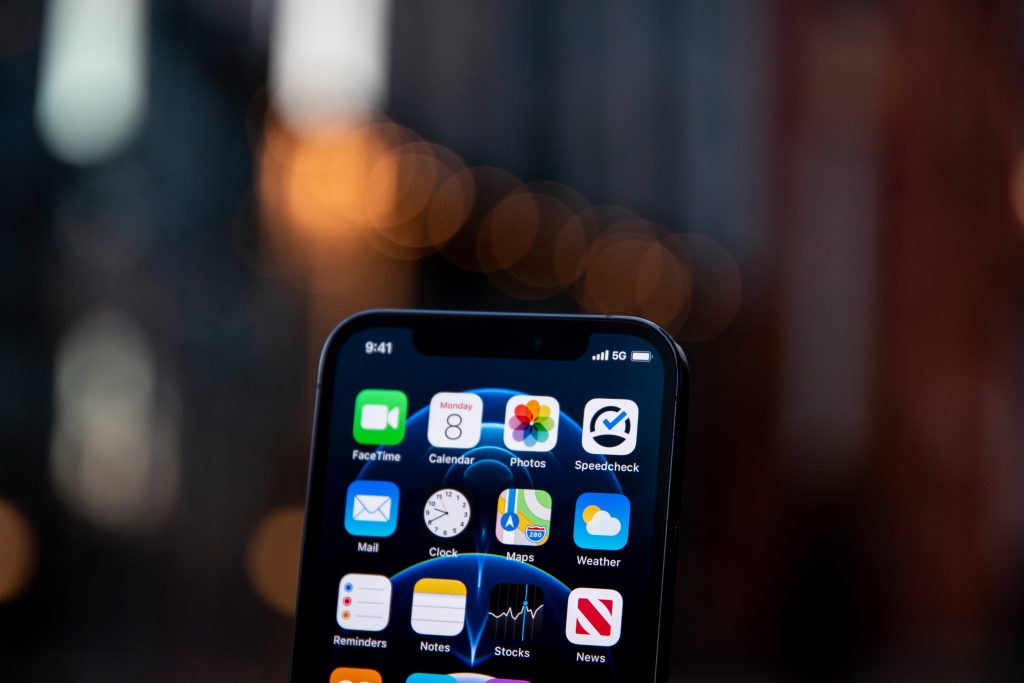Modern cellular networks employ the most cutting-edge technologies to offer mobile phone users the best services.
The fifth generation of cellular network technology, or 5G, benefits users.
It is gradually replacing 4G networks in various parts of the world, which serve smartphone users’ data access needs.
The network helps individuals and developers install applications more quickly.
To make the best choice regarding whether to upgrade from 4G or not, it is crucial to fully understand the benefits and drawbacks of the 5G network.
What is 5G?
Each of the first four generations, with 3G and 4G focusing on enhancing mobile data, introduced a new degree of connectedness.
5G is the fifth generation of mobile network technology.
It aims to carry on this development and increase the use of mobile broadband connections.
Together with 4G, 5G will eventually completely replace it.
The radio frequencies used by 5G are the same ones smartphones use.
However, this unique technology has greatly enhanced network connectivity, opening up new possibilities for even more creative solutions.
5G is driving rapid advancement and enhancing user experiences, from connected sensors to automated production lines that respond to supply and demand.
Almost everyone who uses a cellular connection is concerned about the impending transition from 4G to 5G.
Read: Future of Digital Education: Impact of 5G Technology

How Does 5G Work?
5G networks use a system of cell sites to segment their territory into sectors and transmit radio waves carrying encoded data.
Each cell site needs a backhaul link, either wired or wireless, to the network’s main hub.
5G alters data encoding, and carriers have a far wider range of airwave possibilities.
Similar to the encoding used by 4G LTE, 5G networks employ an encoding technique known as OFDM.
With 5G’s ability to operate on any frequency, the new system makes “high-band,” short-range airways available that were inaccessible to 4G technology and allows for three very distinct 5G experiences: low, middle, and high.
All wireless communications use radio frequencies or spectrums to transmit information over the air.
Although it uses higher radio frequencies, known as millimeter waves, 5G is the same.
Due to the millimeter waves’ reduced interference with other wireless communication signals, 5G networks can transmit data much more quickly.
5G will also use many antennae and tiny transmitters on structures and different street features, such as park benches, to boost capacity and transmissions.
If this is done, the network will be able to accommodate more devices than just 4G.
Network slicing, a feature of 5G, even enables users to build subnetworks to specialize the connection for particular purposes.
Network slicing lowers the chance of network overload, so consumers can use the fast speeds.
A hospital might divide its 5G network into departments or floors to further maximize its capabilities.
Read: Edge Computing and 5G: How It’s Enhancing Mobile Network Performance
Pros of 5G Network
1. High speeds
The most obvious benefit is this.
Compared to 4G and 4G LTE, 5G operates more quickly on mobile phones and other devices.
Instead of taking minutes, it lets customers download movies, videos, and music in seconds.
The network’s anticipated 20 Gbps speed should allow businesses to use it for services like automation, cutting-edge web conferencing, etc.
According to a recent poll, customers who used 5G downloaded content in less than 23 hours per day.
The actual speed a corporate customer can use from their 5G provider will depend on several factors, including proximity to towers, the carrier’s technological competence, and whether or not network components have been designed to enable multigigabit throughput.
2. Capacity
According to some estimations, 5G can support up to 10 times more devices per square kilometre than 4G.
Put Your Tech Company on the Map!
Get featured on Nicholas Idoko’s Blog for just $50. Showcase your business, boost credibility, and reach a growing audience eager for tech solutions.
Publish NowAs a result, businesses no longer need to weigh their wireless cellular and Wi-Fi strategies as either/or options.
With 5G, businesses may switch between cellular and Wi-Fi connectivity as needed without worrying about performance being affected or mobile broadband accessibility being constrained.
This is especially true in high-congestion locations like Lagos and other significant urban centres.
The additional capacity of 5G will enable businesses to deploy more connected devices to monitor systems and carry out other tasks, resulting in a dramatic rise in IoT.
3. Low latency
Compared to 4G, 5G offers lower latency, effectively enabling emerging applications like AI, IoT, and virtual reality.
Additionally, it makes it simple for mobile phone users to browse the web and open websites.
Another benefit is that it provides a means to access the Internet whenever you need to find some crucial information.
4. New generation of AI and machine learning-based services
A new wave of interactive services based on AI and machine learning will emerge thanks to 5G.
For instance, augmented reality or virtual reality via video conferencing can imitate settings and assist staff in making better project-related decisions.
Thanks to automation, enterprises will be able to rely on services and applications that are more responsive and predictive than they are now.
According to speculations, the 5G network will support Web 3.0 and the metaverse.
Read: The Evolution of Mobile Network Architecture (1G-5G)

Cons of 5G Network
1. Limited global coverage
The main drawback of 5G is that it only has local availability and has patchy global coverage.
Only urban areas will benefit significantly from the 5G network, and rural areas may not experience coverage for several years.
Furthermore, the costs associated with installing tower stations are significant compared to other networks.
2. Cybersecurity issues
One of the issues with 5G is cybersecurity because hacking will happen.
The increase in bandwidth makes it simple for thieves to grab the database.
Additionally, the software it employs makes it subject to attacks.
Attacks are quite likely when 5G connects to more devices.
As a result, organizations and corporations should invest in a security operations centre to safeguard their infrastructure.
3. Battery damages
Another drawback of 5G technology is that it impairs cellular devices by shortening their lifespan and exhausting their batteries.
Only a small number of manufacturers have so far released 5G-compatible mobile devices.
While efforts are being made to produce 5G gadgets, experts say the technology is proving to be a problem for 4G devices because it frequently results in battery damage.
4. Lack of encryption early in the connection process
5G lacks encryption, and hackers can plan their attacks with more precision, which will affect the companies to a large extent.
More bandwidth will strain current security monitoring and the network requires security measures to prevent cyber threats.
Consumer education is necessary for enhancing security efficiently.
On the other hand, efforts are being taken to improve security along with the initial rollout of 5G.
Keeping all IoT devices updated with security patches will help overcome the problems with optimal results.
Not only that, 5G users should follow some other measures to minimize unwanted problems.
Read: Impact of Internet: Transformation Through Software History
Conclusion
If you want to make wise business decisions, it’s critical to grasp the benefits and drawbacks of the 5G network.
By 2035, it is expected that 5G will revolutionize how we work and inject $12 trillion into the global economy.
Faster speeds and new potential for digital transformation are certainly exciting, but firms must assess whether the moment is right to invest in 5G.
The network continues to have problems with coverage, security, and device compatibility.
Before You Go…
Hey, thank you for reading this blog post to the end. I hope it was helpful. Let me tell you a little bit about Nicholas Idoko Technologies.
Put Your Tech Company on the Map!
Get featured on Nicholas Idoko’s Blog for just $50. Showcase your business, boost credibility, and reach a growing audience eager for tech solutions.
Publish NowWe help businesses and companies build an online presence by developing web, mobile, desktop, and blockchain applications.
We also help aspiring software developers and programmers learn the skills they need to have a successful career.
Take your first step to becoming a programming expert by joining our Learn To Code academy today!
Be sure to contact us if you need more information or have any questions! We are readily available.
[E-Books for Sale]
1,500 AI Applications for Next-Level Growth: Unleash the Potential for Wealth and Innovation
$5.38 • 1,500 AI Applications • 228 pages
Are you ready to tap into the power of Artificial Intelligence without the tech jargon and endless guesswork? This definitive e-book unlocks 1,500 real-world AI strategies that can help you.
See All 1,500 AI Applications of this E-Book
750 Lucrative Business Ideas: Your Ultimate Guide to Thriving in the U.S. Market
$49 • 750 Business Ideas • 109 pages
Unlock 750 profitable business ideas to transform your future. Discover the ultimate guide for aspiring entrepreneurs today!
See All 750 Business Ideas of this E-Book
500 Cutting-Edge Tech Startup Ideas for 2024 & 2025: Innovate, Create, Dominate
$19.99 • 500 Tech Startup Ideas • 62 pages
You will get inspired with 500 innovative tech startup ideas for 2024 and 2025, complete with concise descriptions to help you kickstart your entrepreneurial journey in AI, Blockchain, IoT, Fintech, and AR/VR.
We Design & Develop Websites, Android & iOS Apps
Looking to transform your digital presence? We specialize in creating stunning websites and powerful mobile apps for Android and iOS. Let us bring your vision to life with innovative, tailored solutions!
Get Started Today



